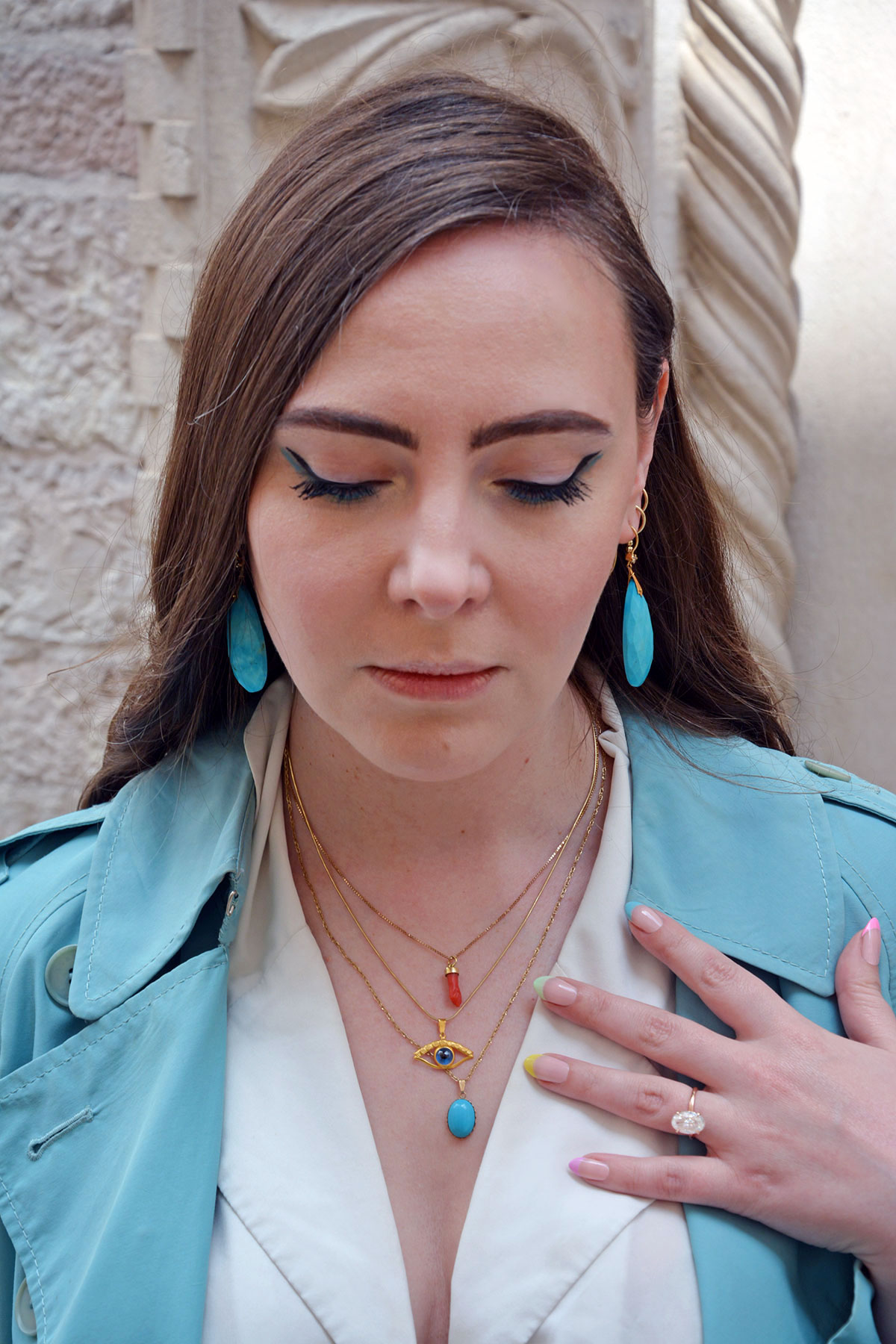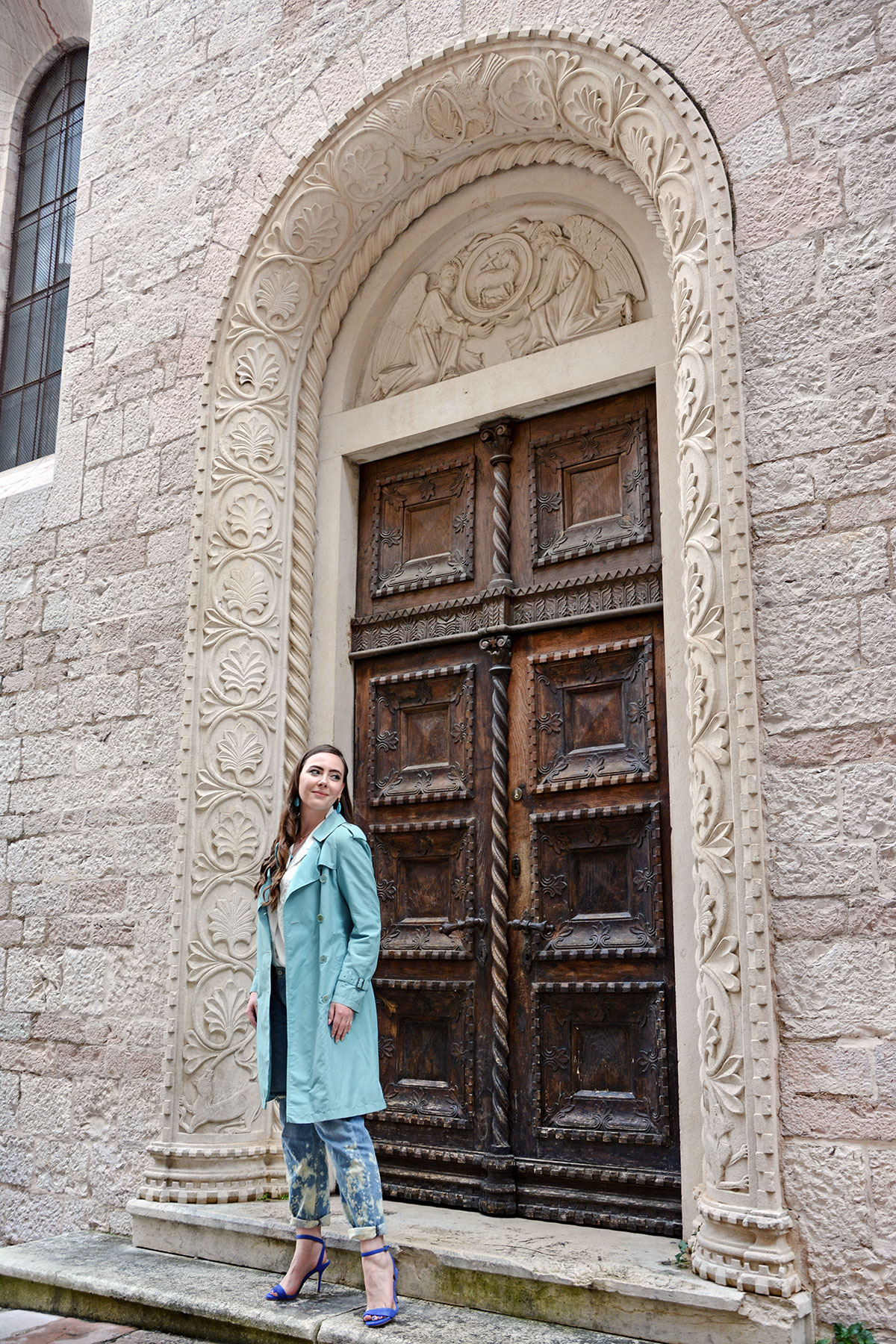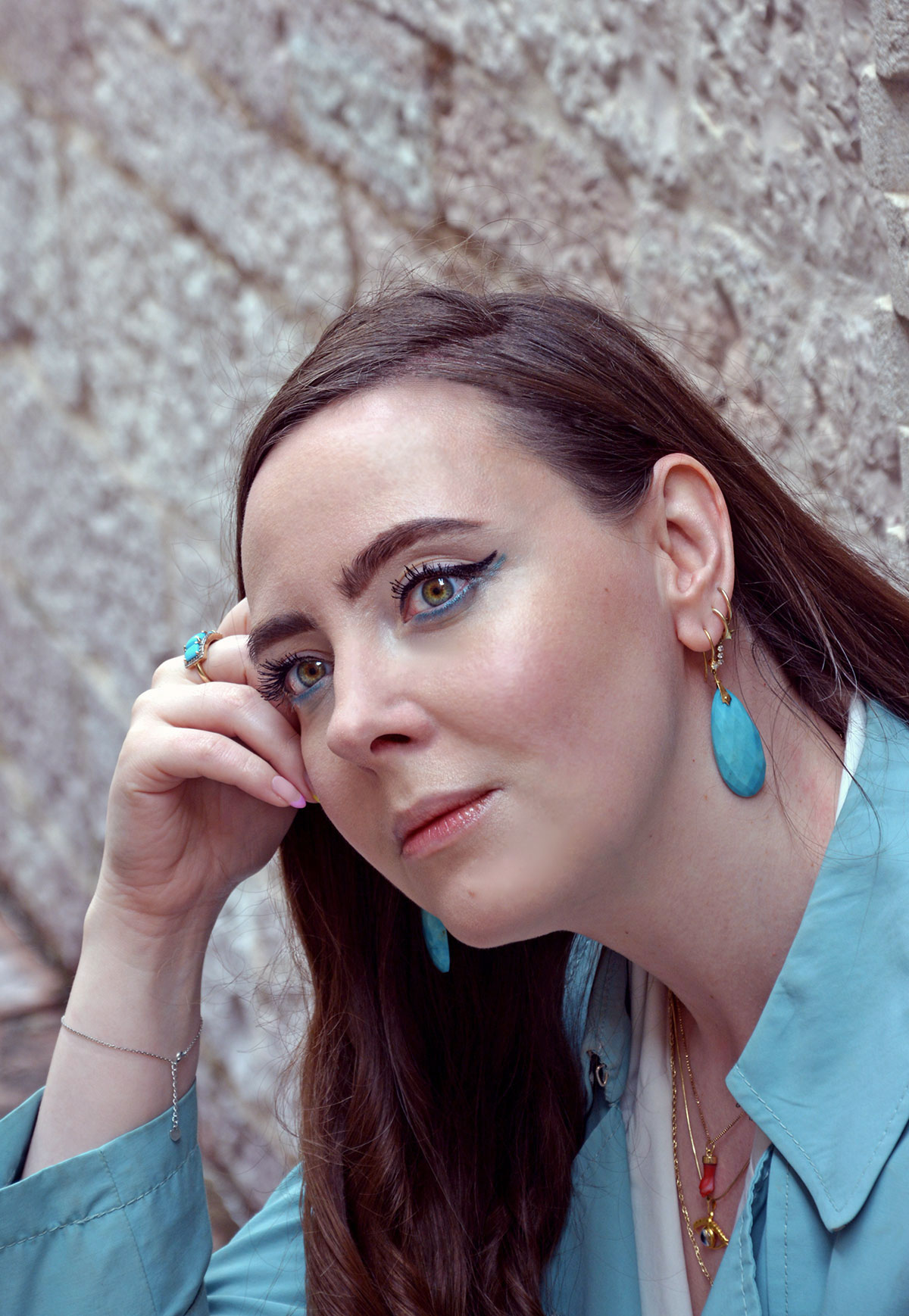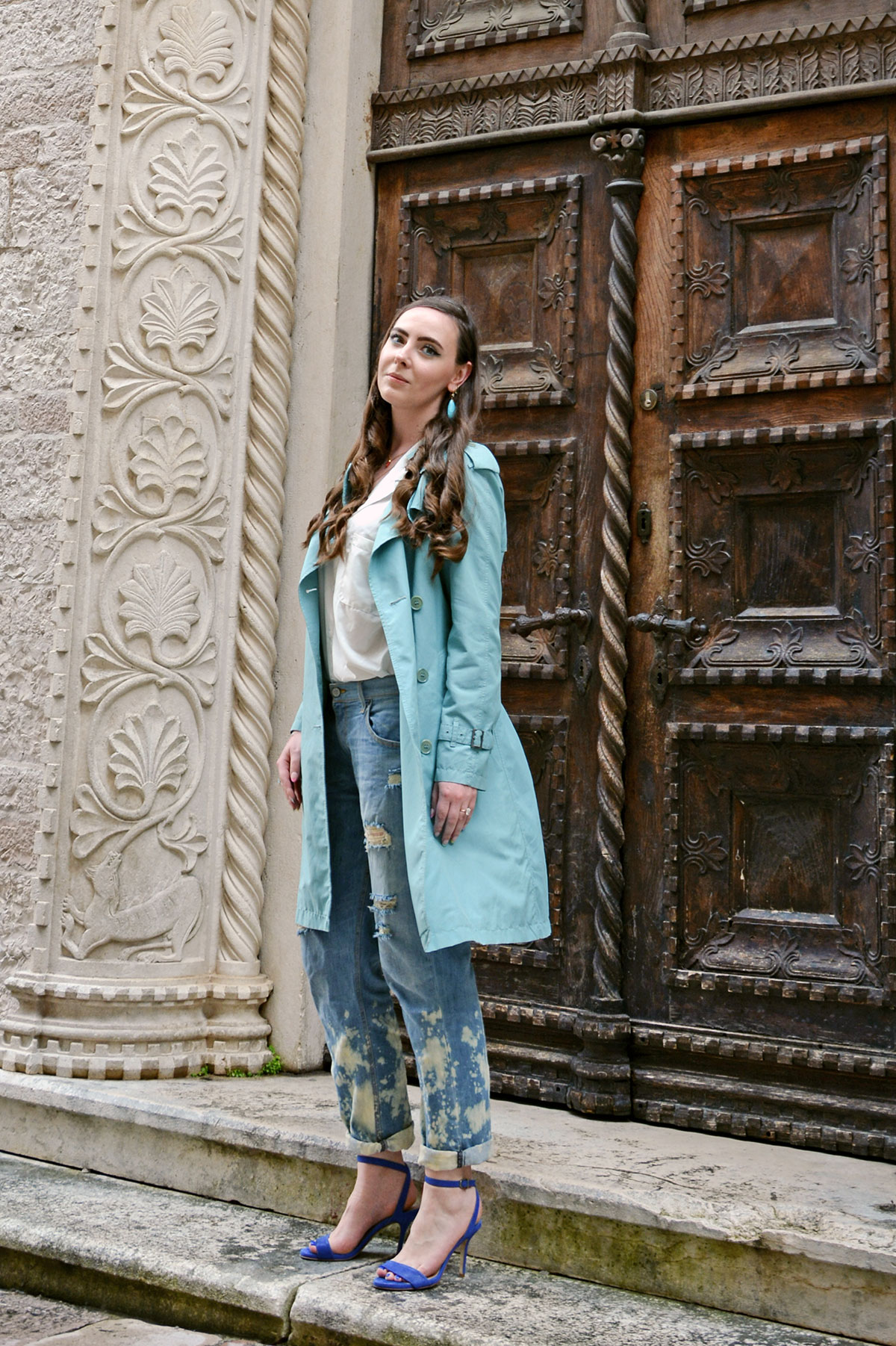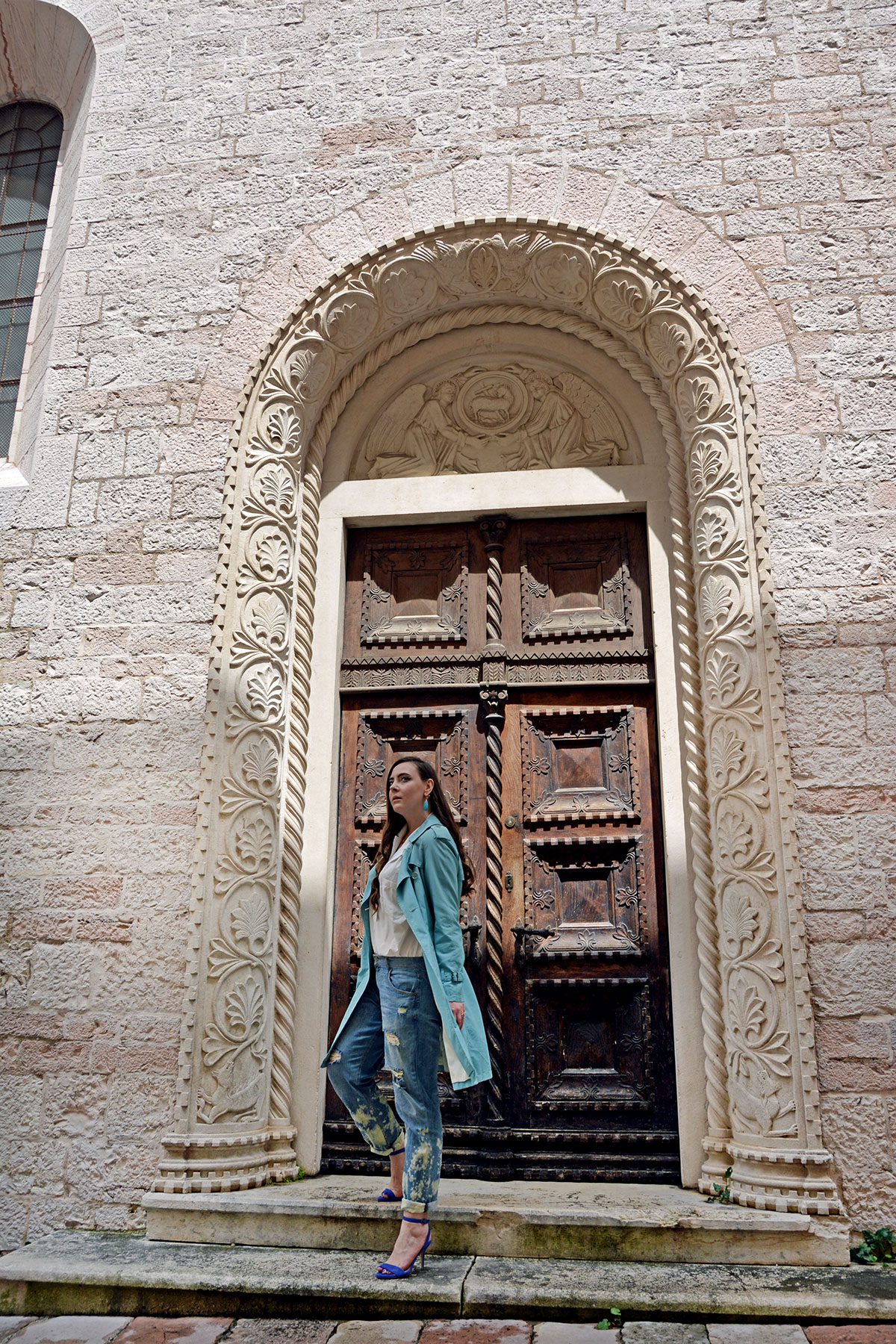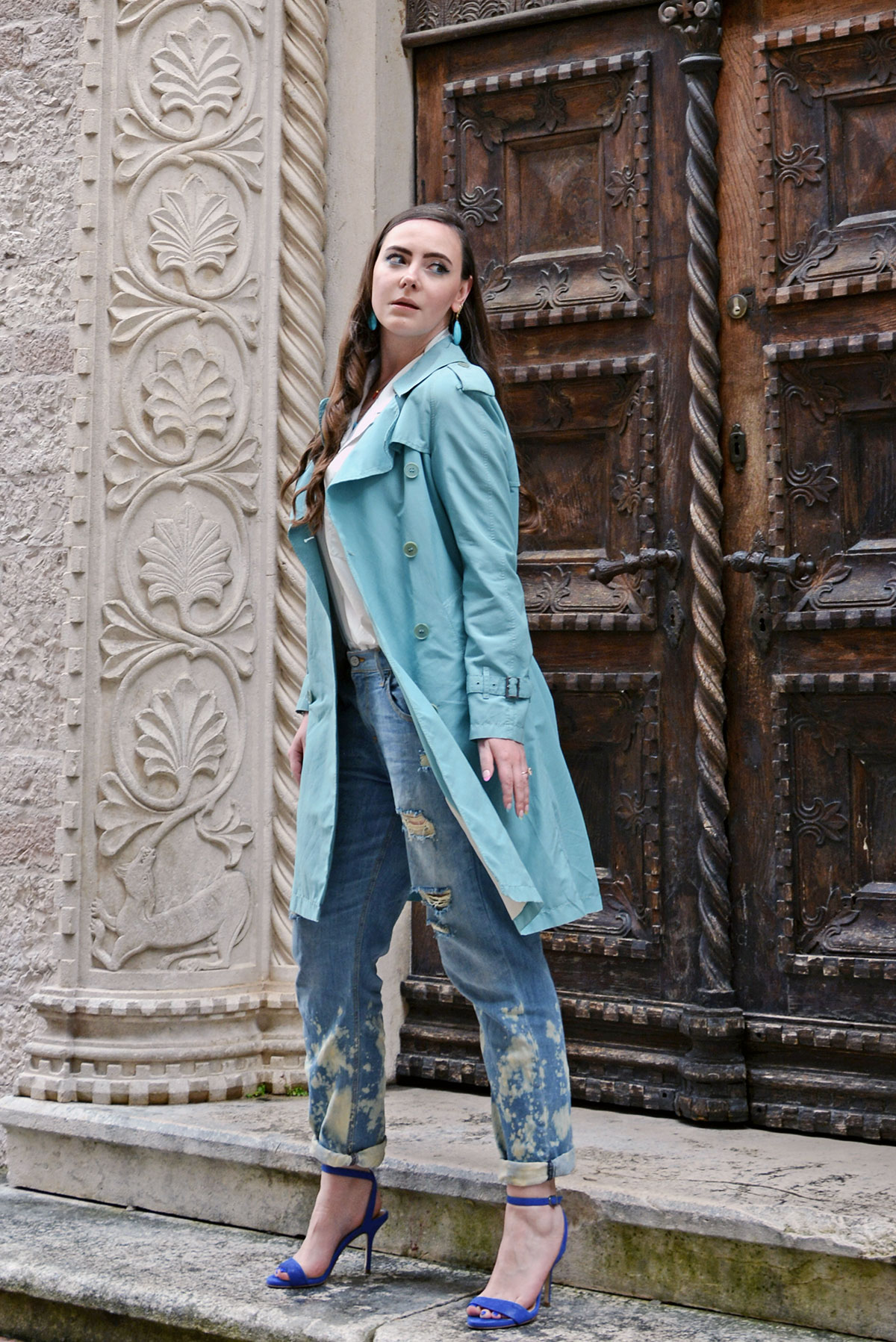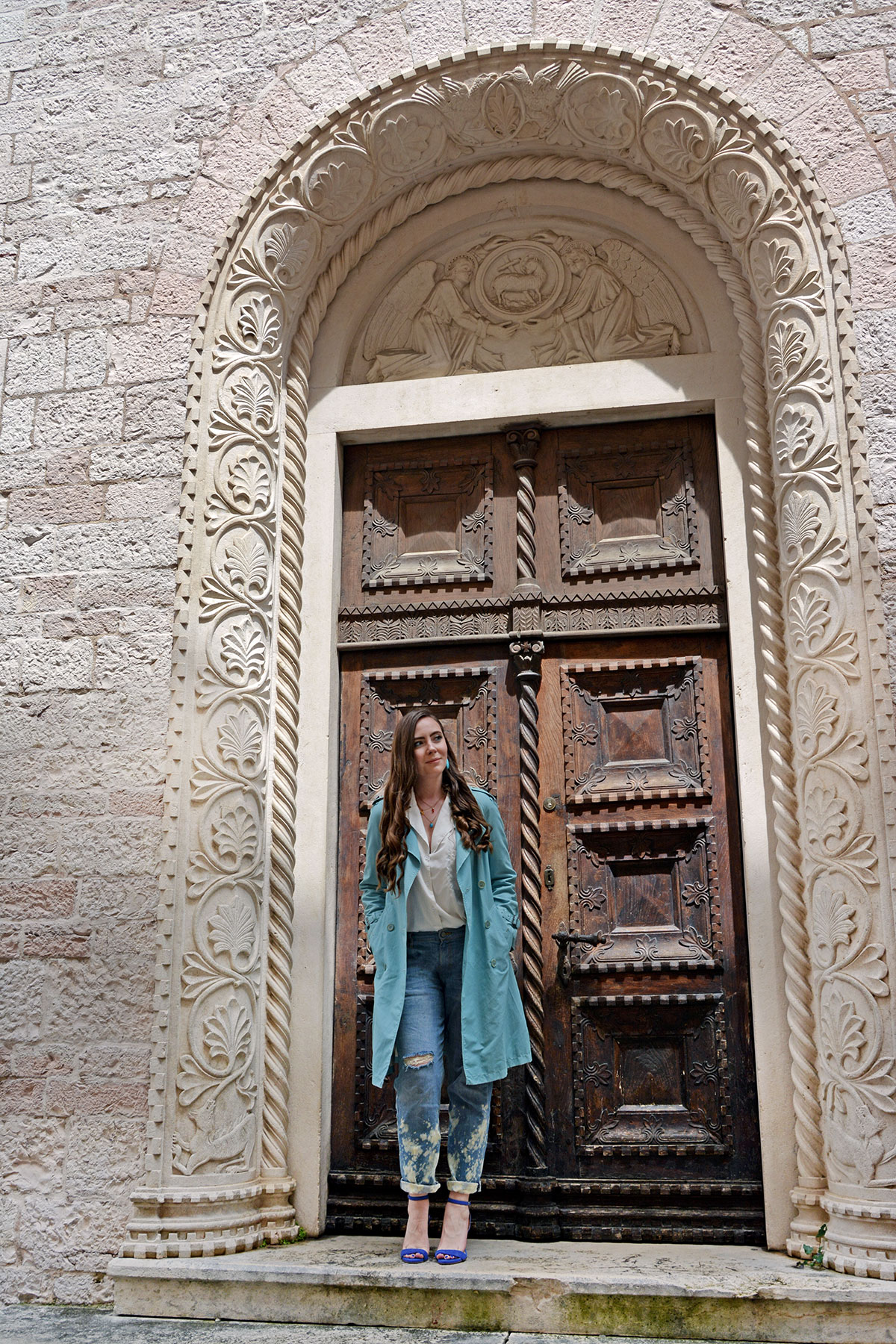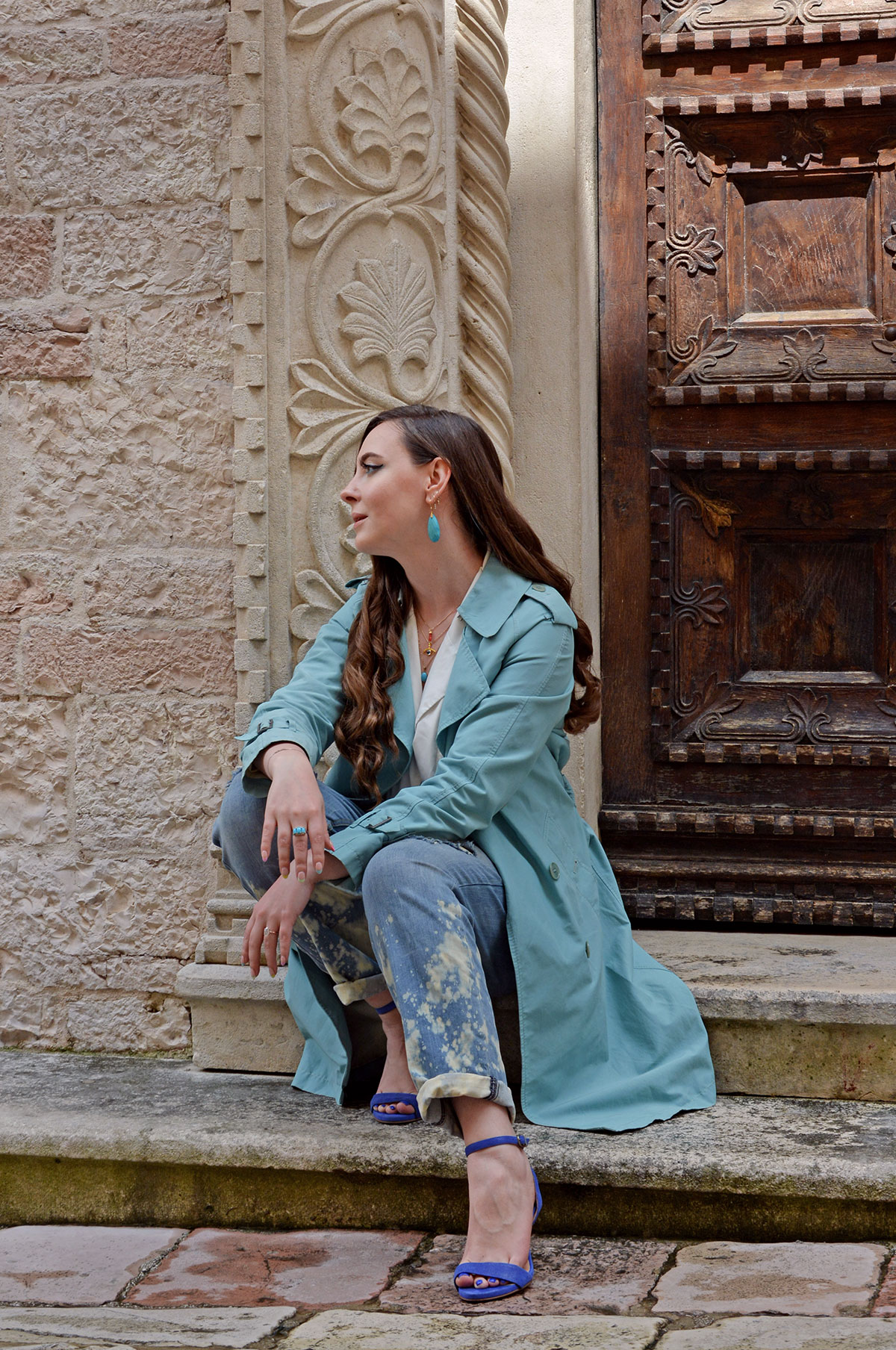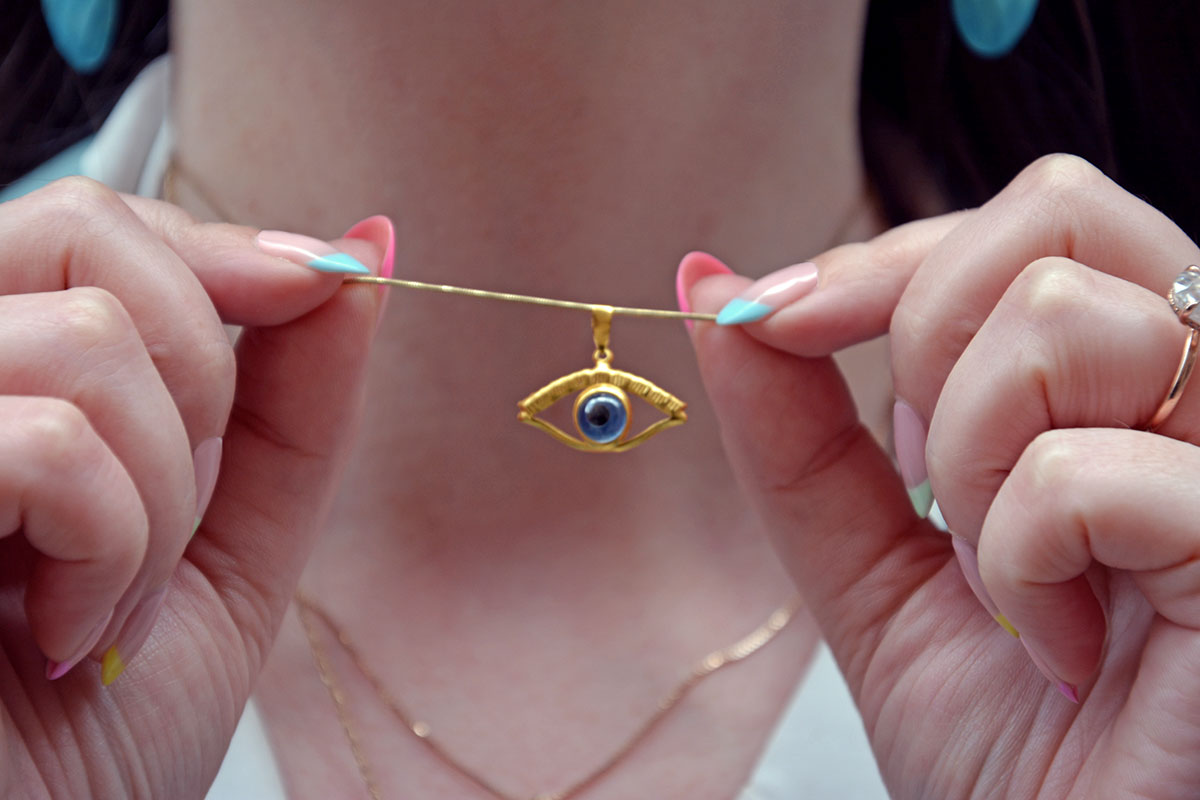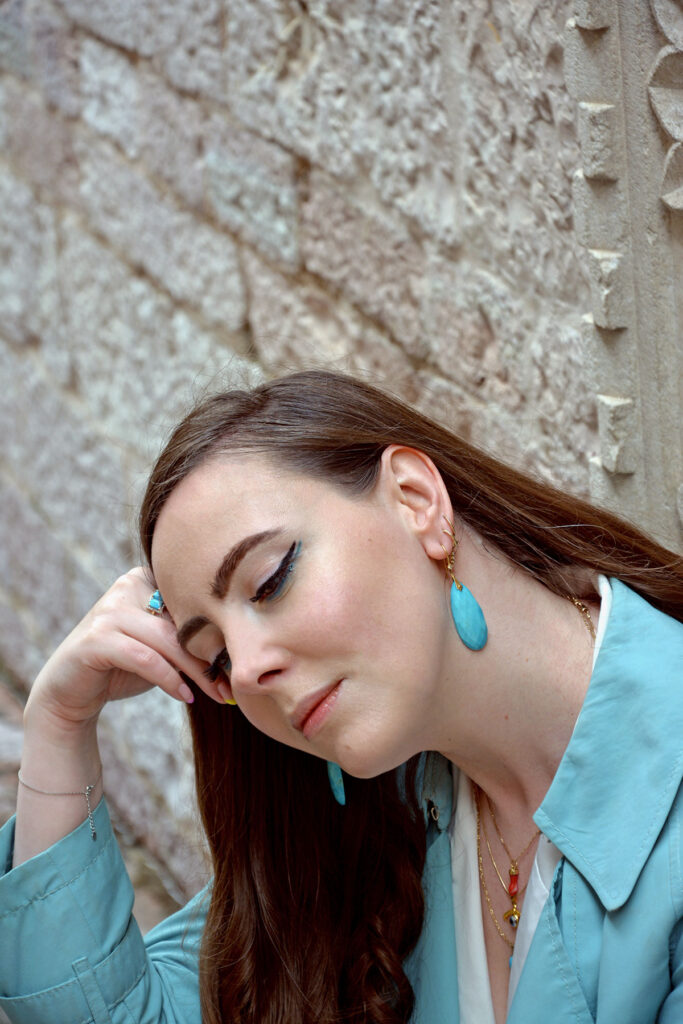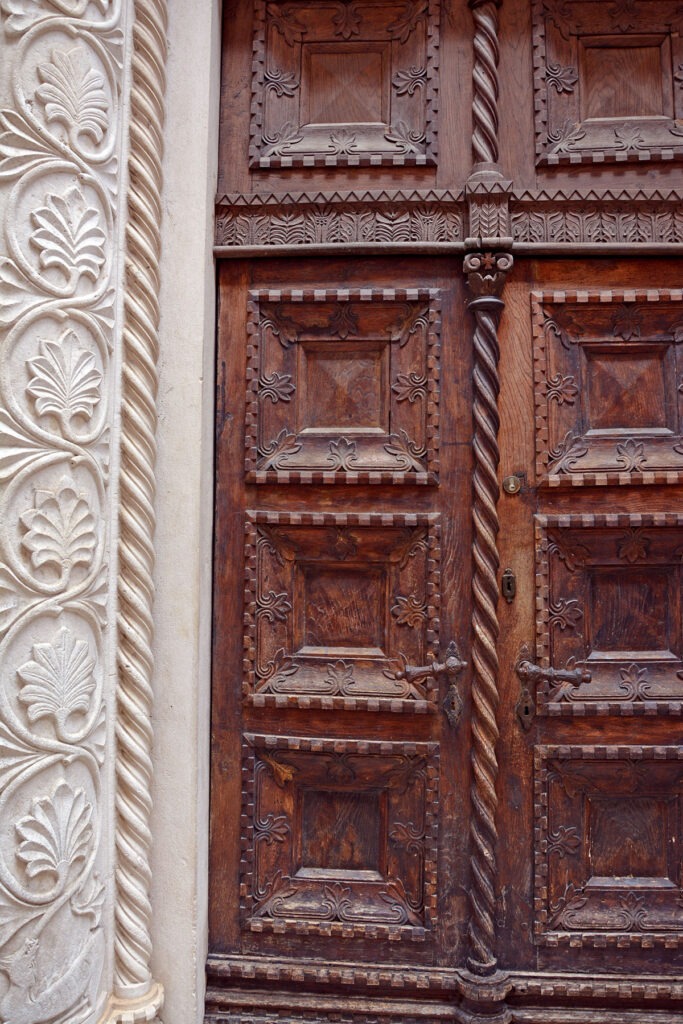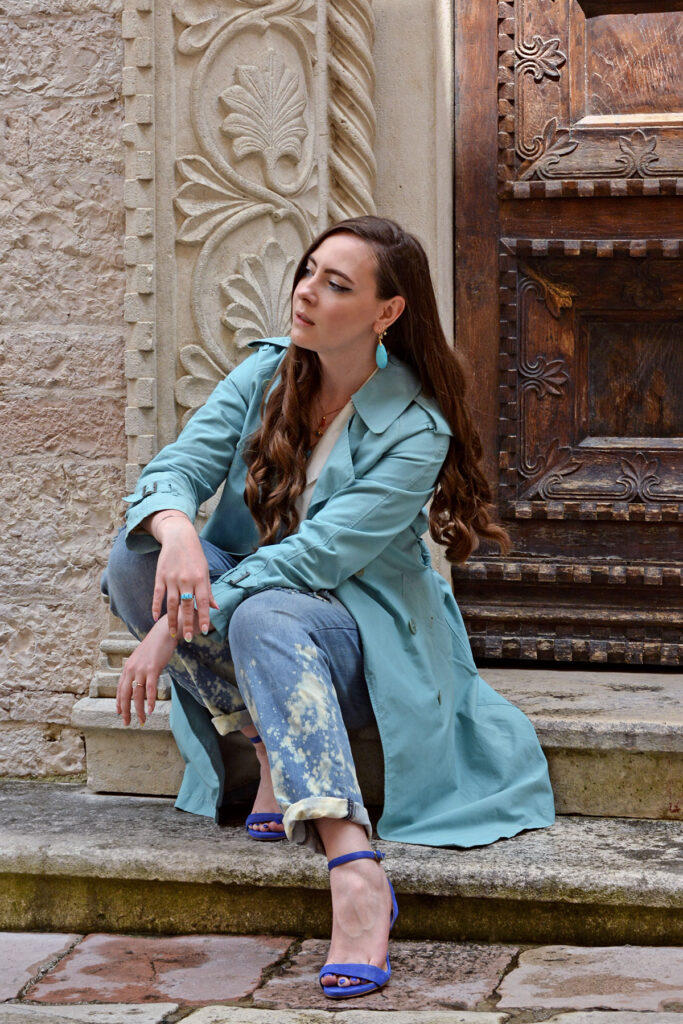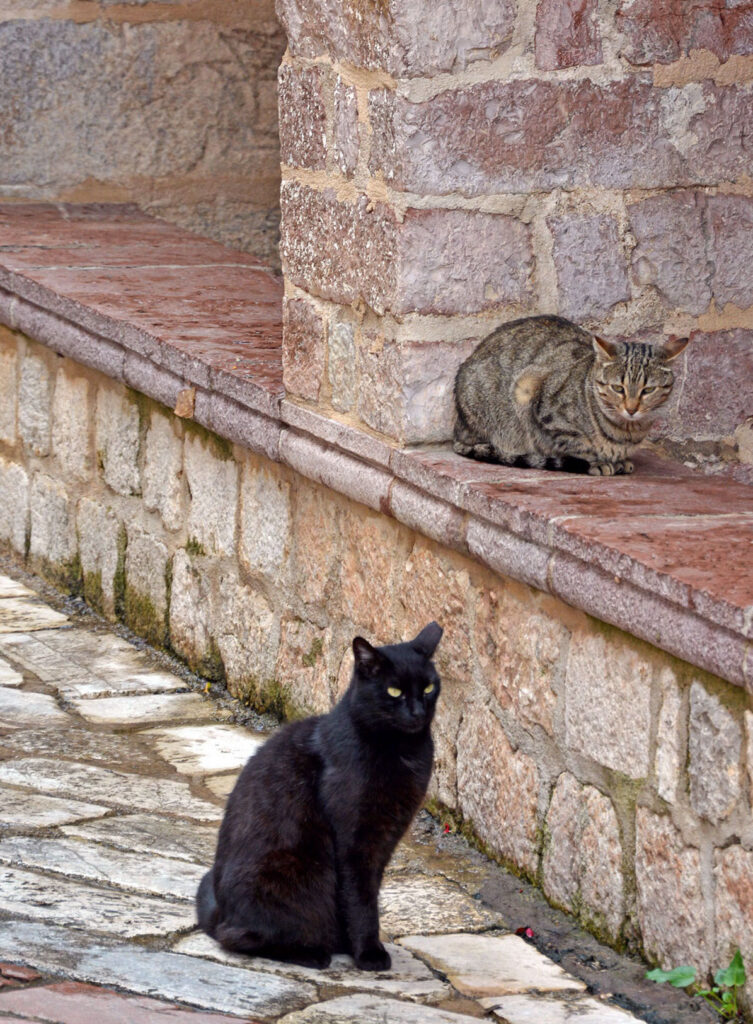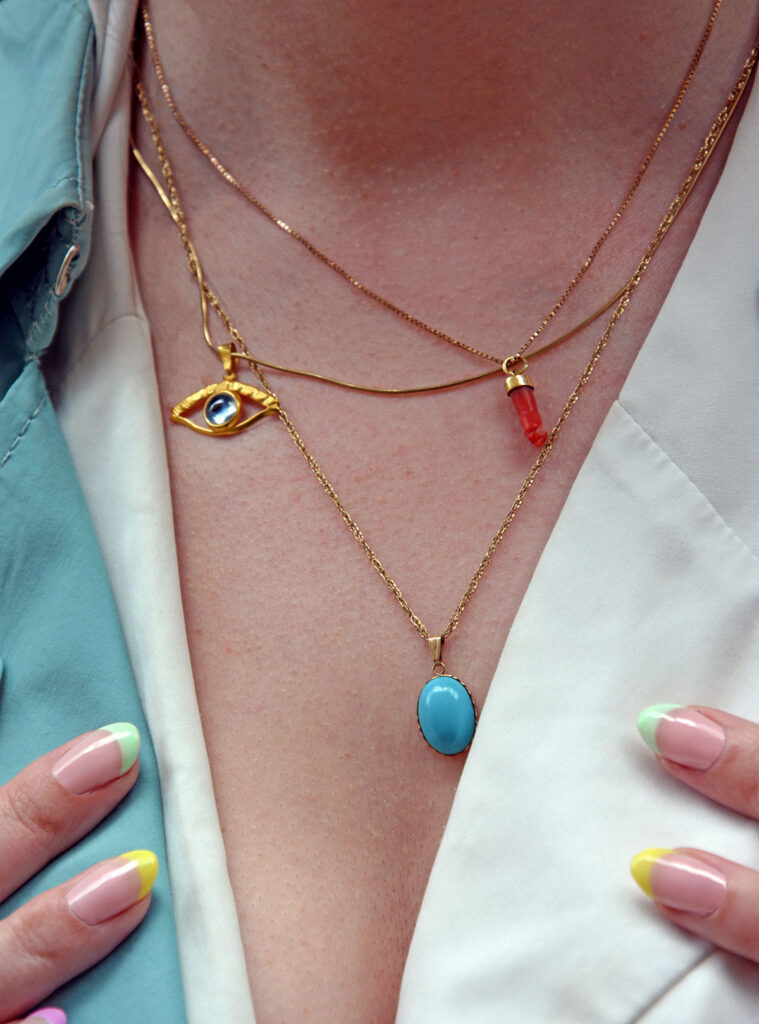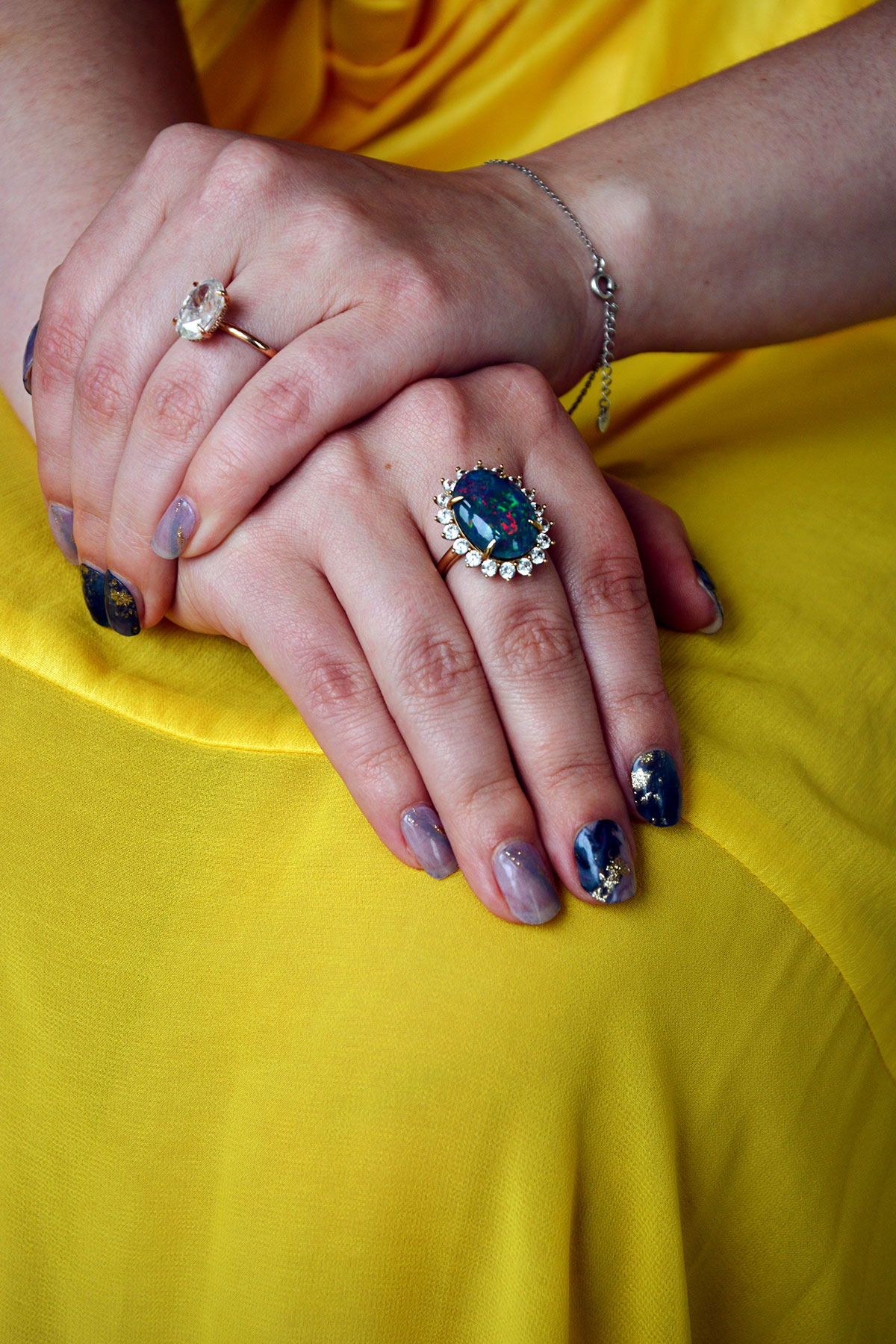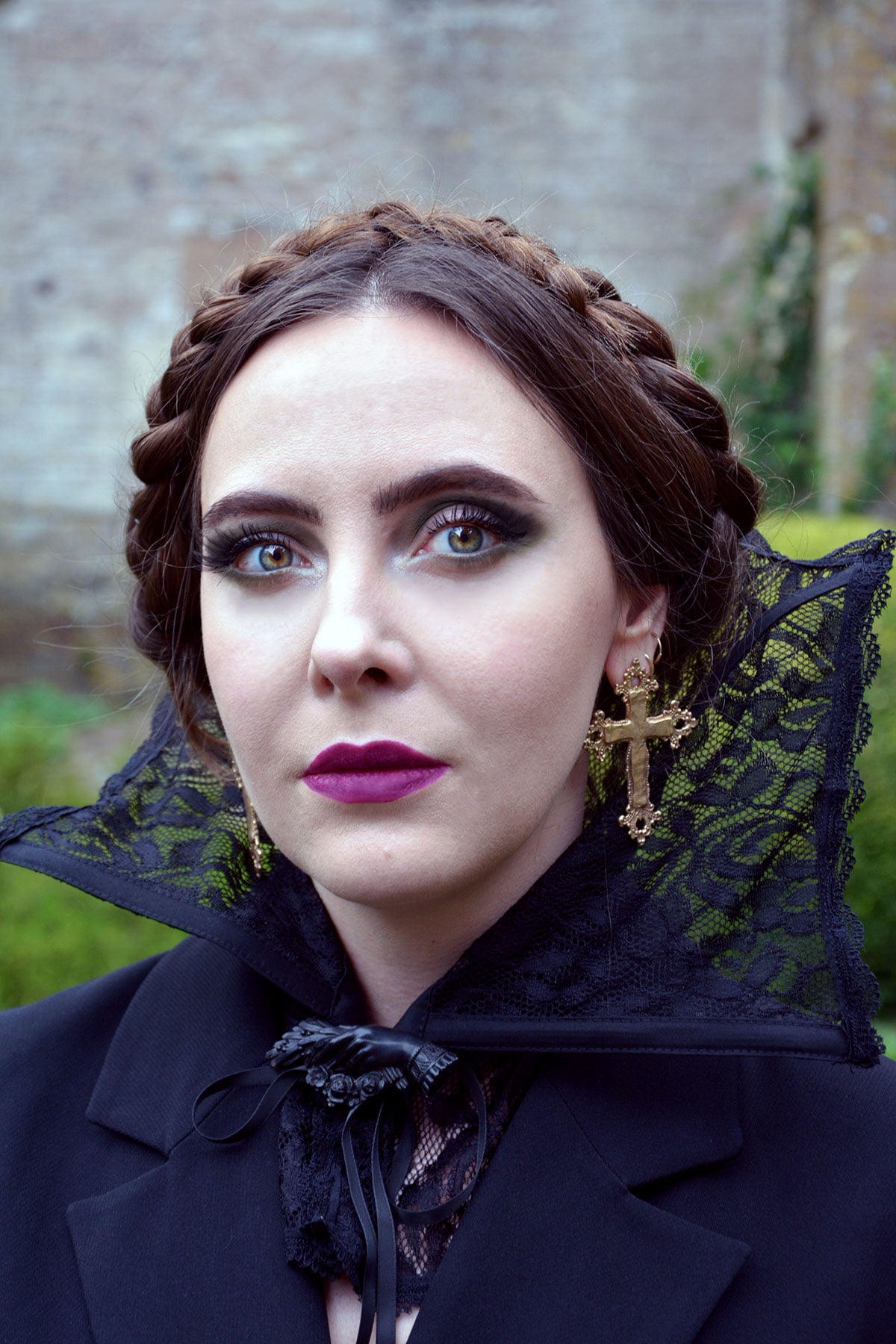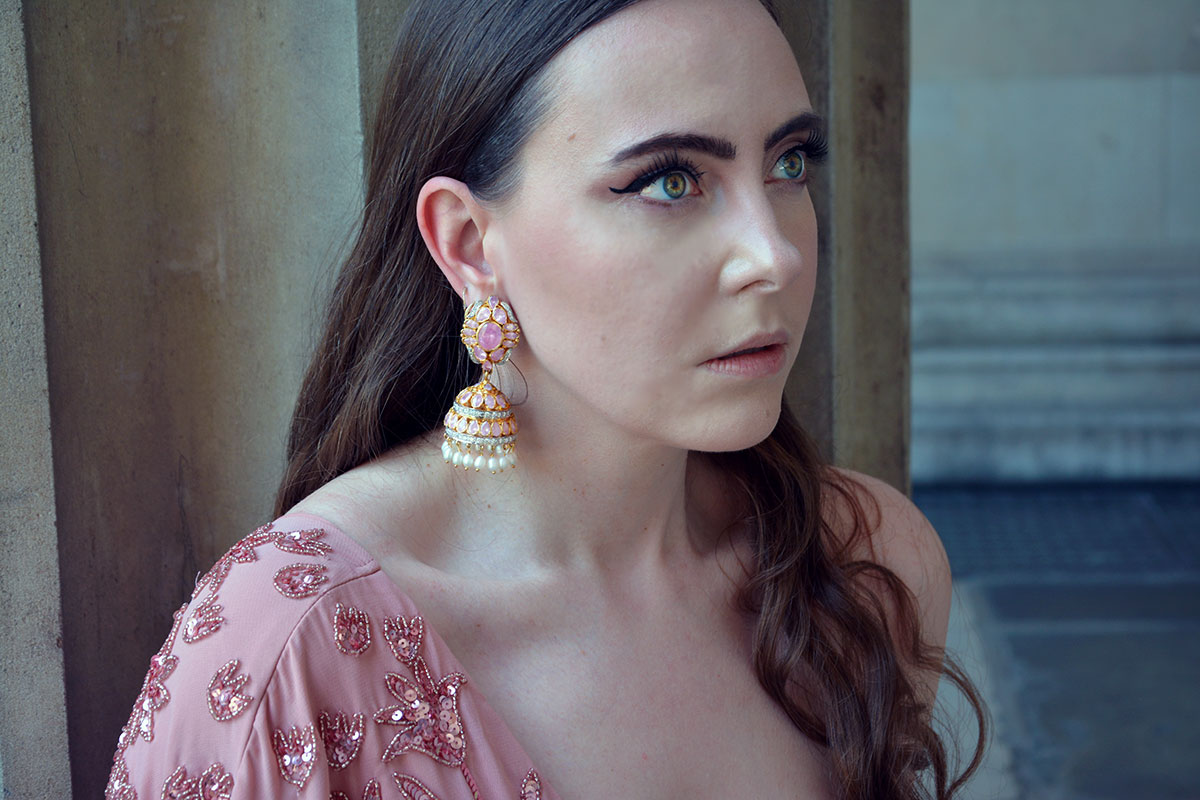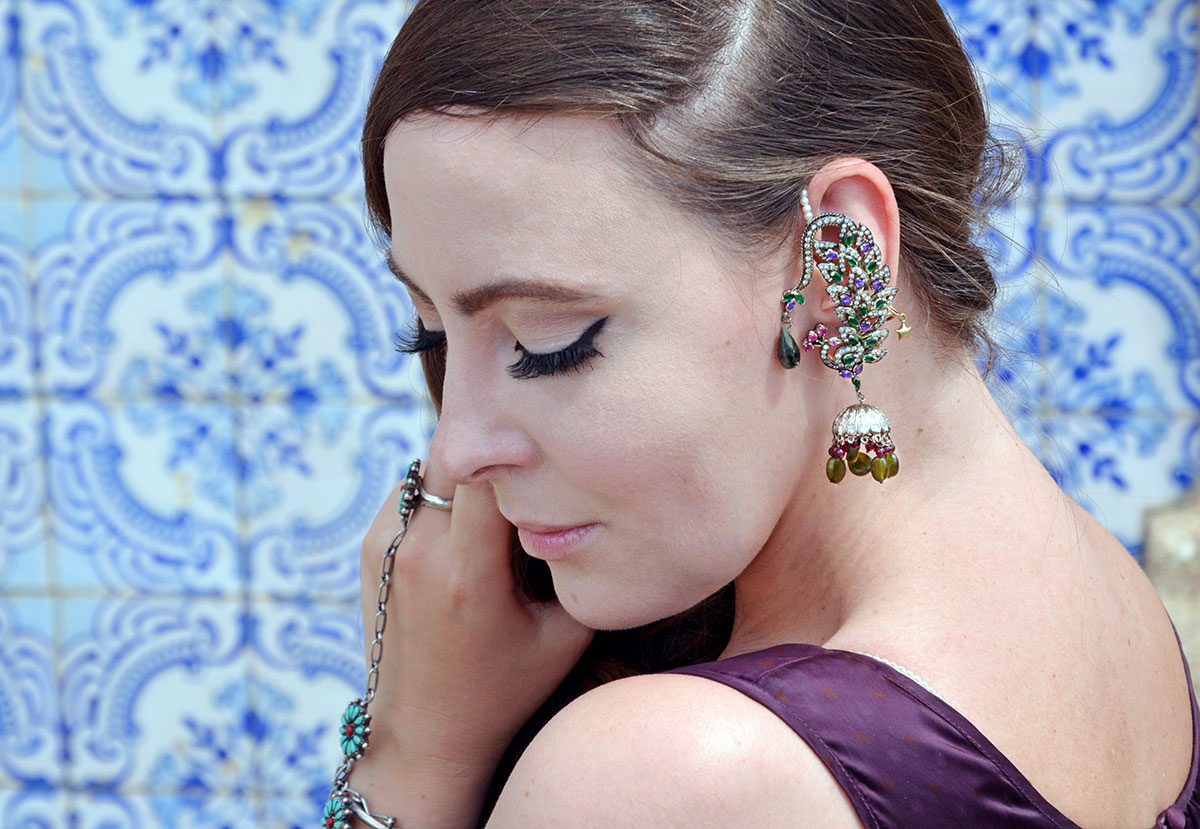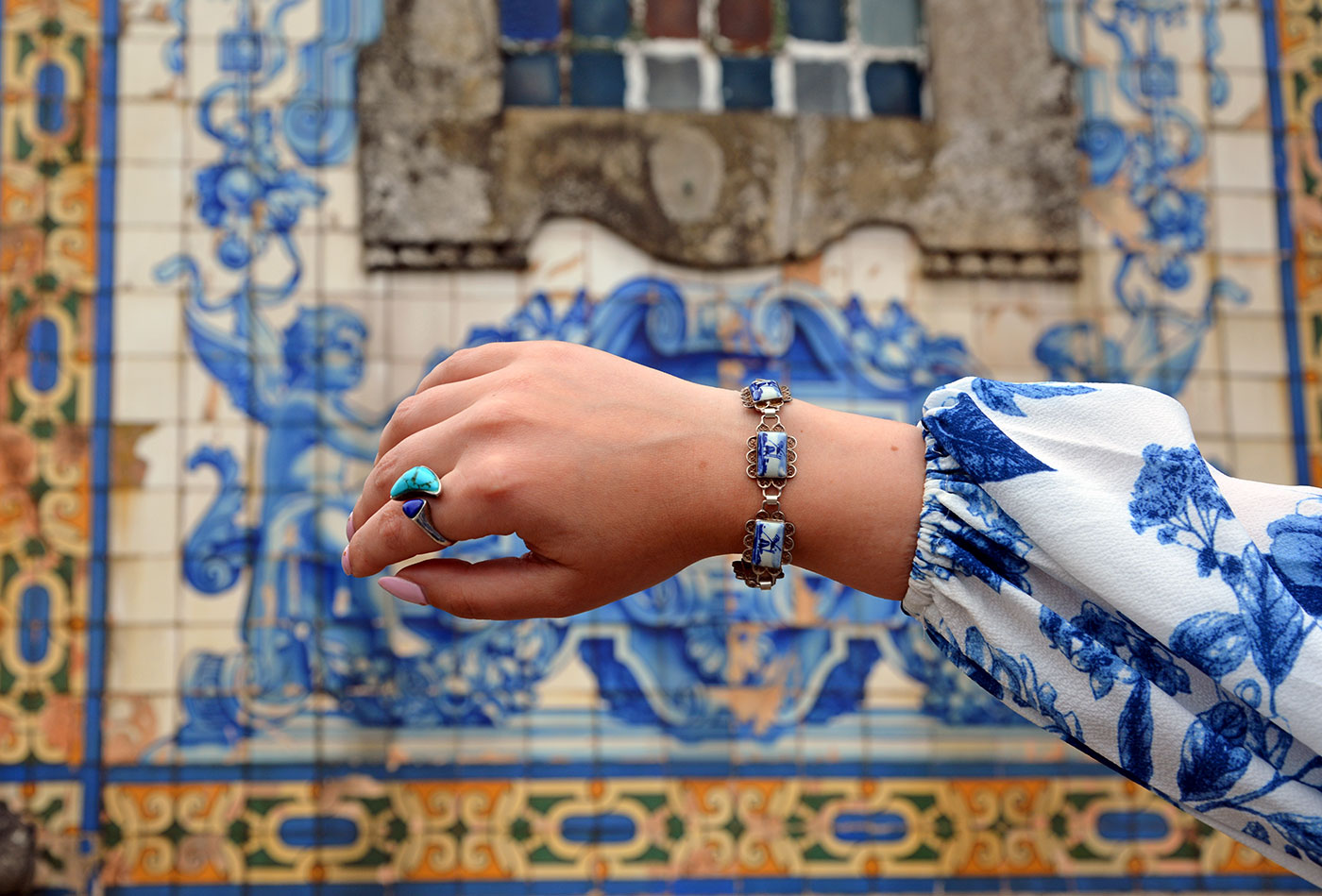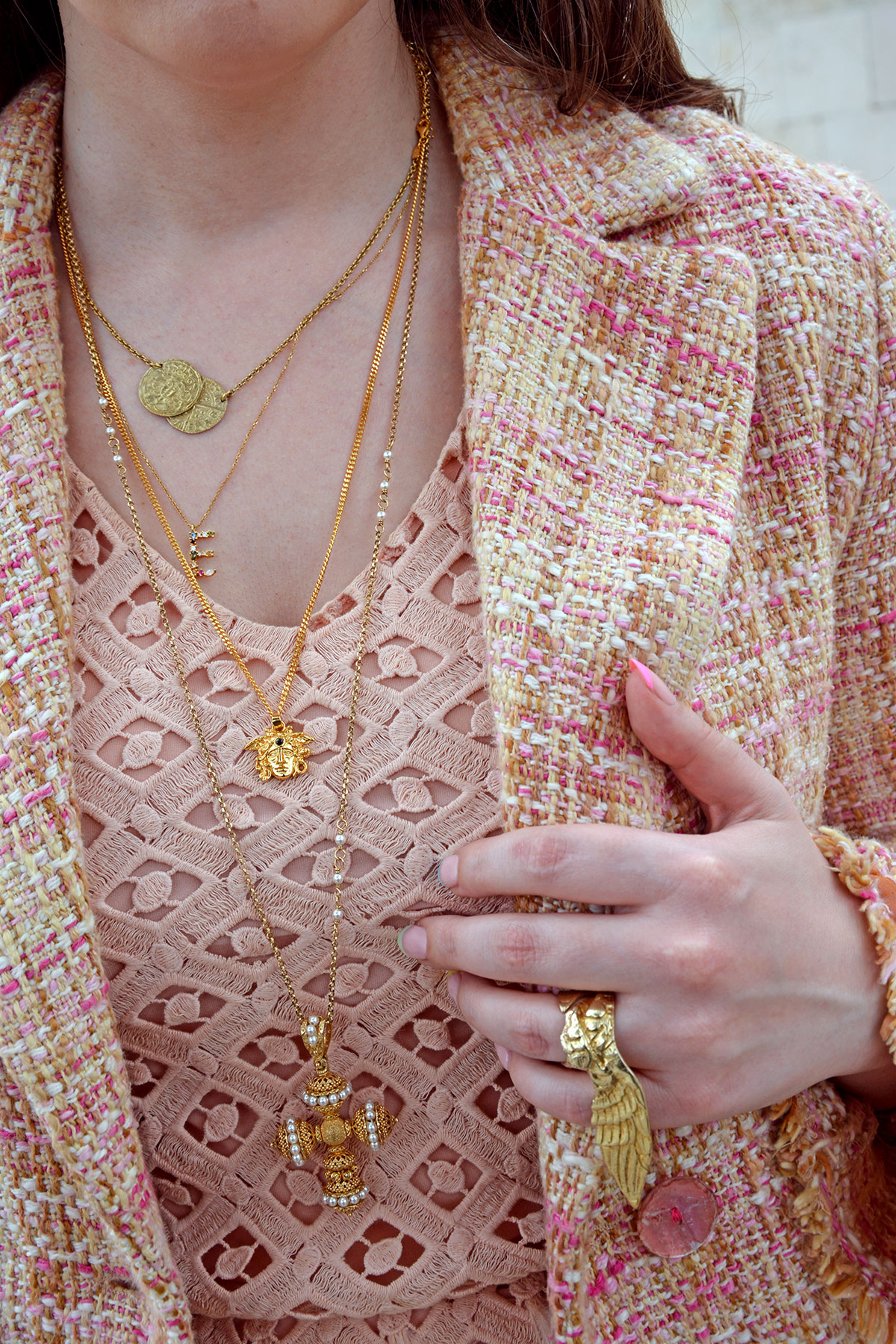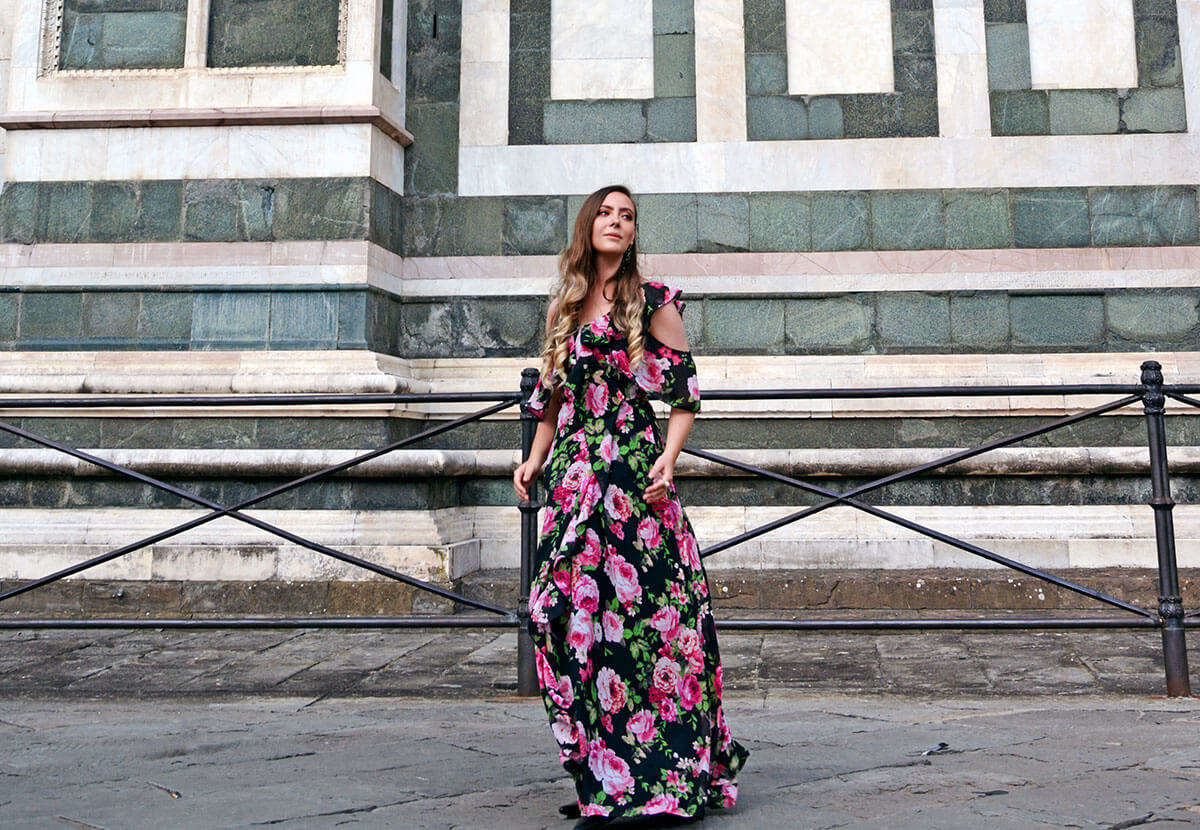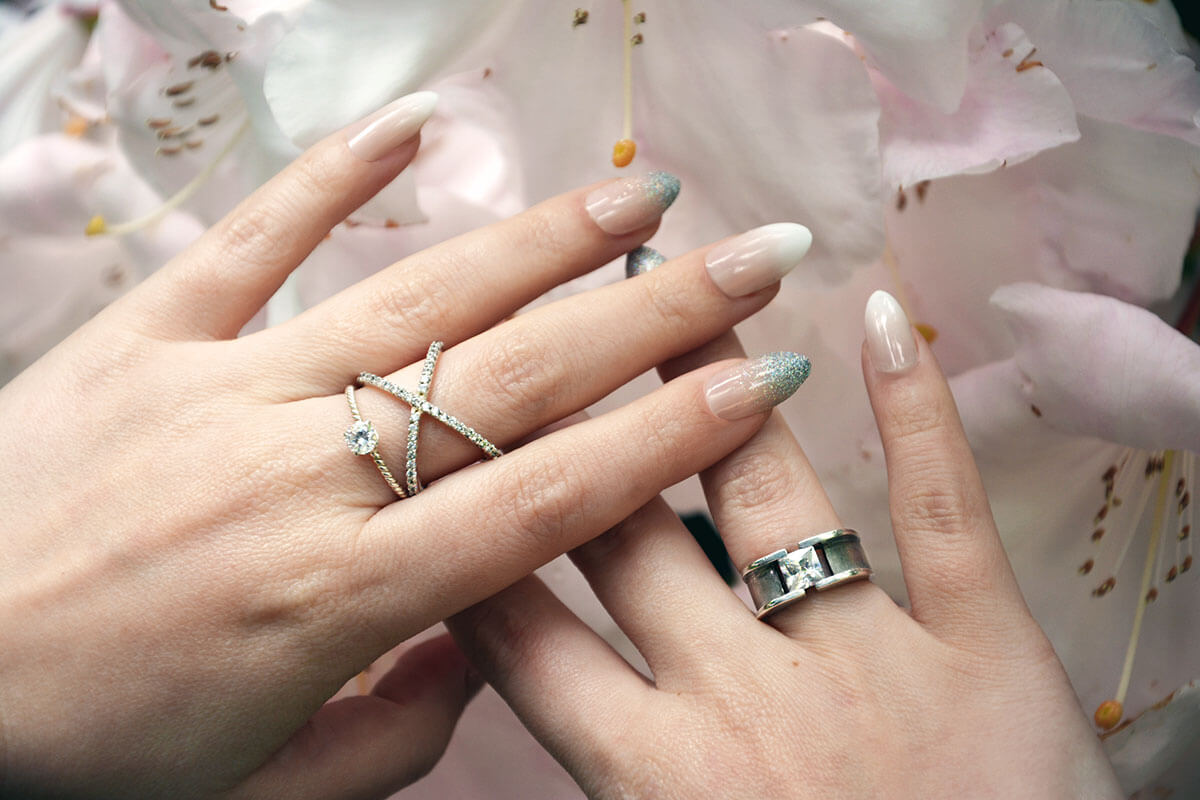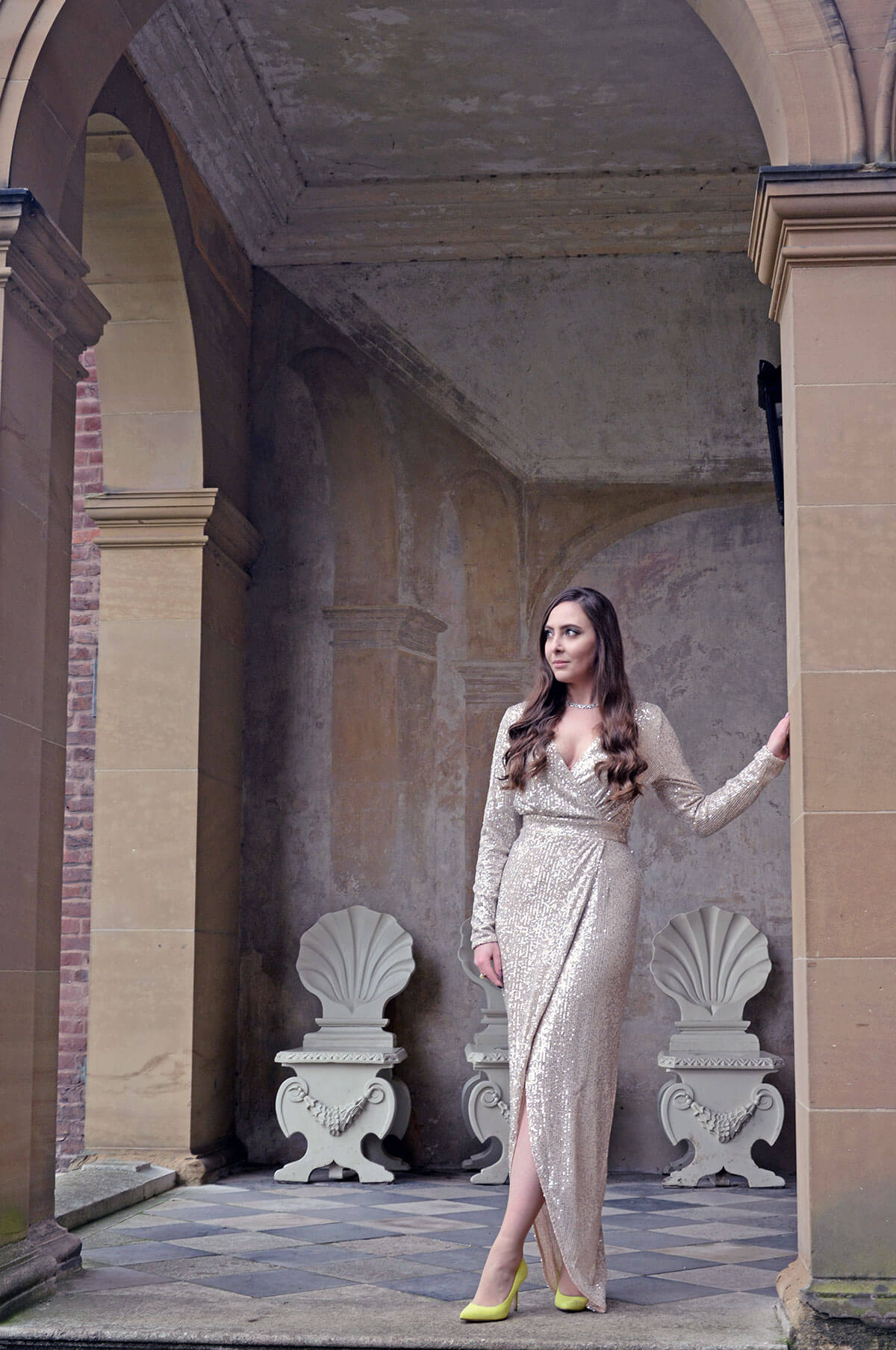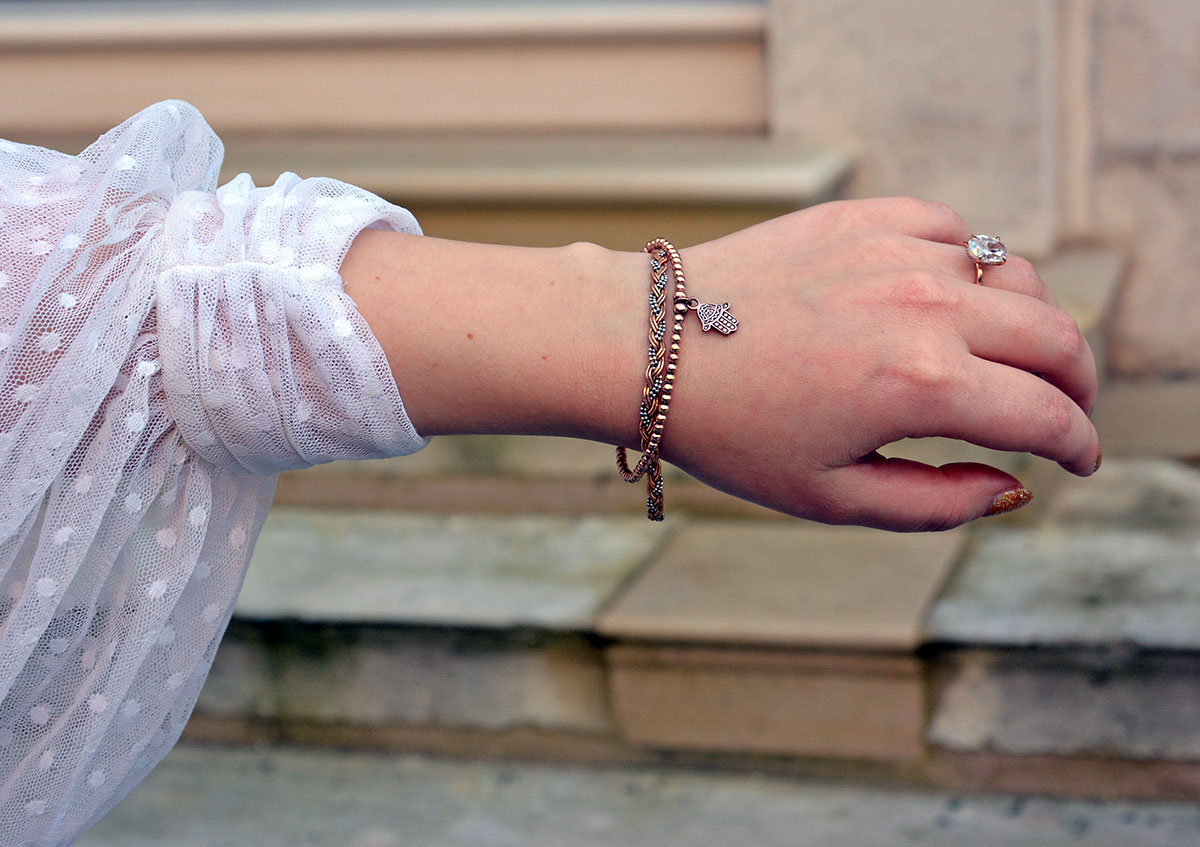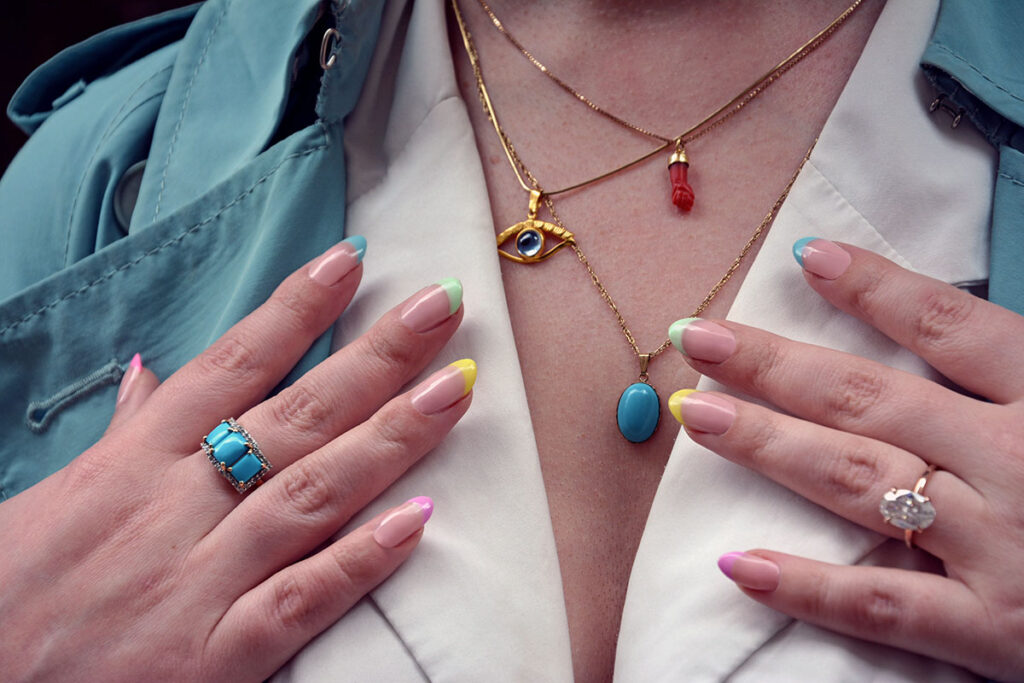
Ever had the feeling that you’re being watched? With a bombastic side eye, perhaps? 👁️ The evil eye symbol in jewellery has been around since civilisations began. Let’s explore its history, and its place in fashion right now.
Evil eye jewellery in ancient times
While the evil eye symbol dates back to Ancient Greece, you can find roots of the “protective eye” in Ancient Egyptian jewellery, mainly the eye of Horus, also known as the Wedjat eye. While the idea was that this is the eye of a god, its purpose was protection and power. At some point, the eye of a god morphed into what we call today – the evil eye.
So let’s go back to Ancient Greece, VI century BC. The first record of Ancient Greeks using the evil eye symbol, or what they called mati, appeared on drinking cups and jugs. It seems like the Ancients really did not trust people who they drank with because they not only plastered evil eye symbols on drinking vessels, they also sometimes carved them out of amethyst to disguise the fact that they were not drinking wine, but water instead.
In literature, Plato, Hesiod and Plutarch among others, all mentioned the evil eye, explaining its purpose and origin. The latter author stated that the eye was the seismic point of evil, shooting malignant rays at unsuspecting victims, simply by staring. The remedy? A talisman that would stare right back, bouncing all the unholy energy right where it came from. Therein lies the paradox of the evil eye – it in itself is not malevolent, but it’s purpose is to repel evil. Think of it like mosquito spray, but just for blocking blood sucking egregious curses, instead of insects that buzz around and drink your blood. Not sure which one is worse. Speaking of blood suckers, if you feel like feeding your inner goth, have a breeze through my piece on vampire jewellery.
Evil eye to lover’s eye
The evil eye genre has never left the chat. It remains a wearable body part to this day. Particularly popular in the Middle East, the evil eye can not only adorn your neck, hands and fingers as jewellery, but also serve as an embellishment for the home, often hung near doors and entry points to a house as a symbol of good fortune. Another body part that we find ourselves wearing as well as hanging around our humble abodes for protection is the hand. Find out more about the hand symbol in jewellery here.
But in the XVIII century there has been a momentary switch. An eye that for centuries has been fighting all evil has been struck by Cupid’s bow. For a glimpse in history, the evil eye turned into the lover’s eye, and this is how it allegedly happened.
In 1785, Prince George of Wales in pursuit of Maria Fitzherbert, commissioned what was the first painted lover’s eye miniature. It basically was a painting of his one eye. This was to show Maria that he only had eyes for her. After exchanging love letters, she also had a locket created which carried her own gaze for him to wear around his neck. The story goes that they married in secret, but the relationship didn’t last. But they set a jewellery trend that lasted well into the Victorian era.
Lover’s eye jewellery included miniatures set in precious metals, and worn as pendants. These were tiny likenesses of eyes, or better yet, a single eye, painted either on ivory or porcelain. The trend became popular because unlike miniature portraits where one could see the person, an eye could keep the identity of the lover fully anonymous.
It was said that Queen Victoria, a huge fan of mourning and sentimental jewellery, also commissioned lover’s eyes pendants as gifts to those she held dear.
The trend was short-lived, and after the invention of photography, lover’s eye jewellery was no longer relevant as people could simply take pictures of their lovers, dispose of them after their affairs, and get new pictures of their following pursuits.
Having said that, if you stumble upon genuine lover’s eye jewellery when antiquing, expect to pay a premium, as it has been estimated that only over a thousand of genuine pieces exist, and because of this scarcity, they are highly prized. You can find some beautiful samples of lover’s eye jewellery in museums such as the V&A.
Eye jewellery today
While there are a lot of designers that have their own take on eye jewellery, you can find incredible examples of pendants, bracelets and even signet rings featuring the evil eye all around Middle Eastern souks and bazaars. You can get high carat gold jewellery, silver pieces as well as costume adornments. In Turkey, will stumble upon nazar, which is one of the most popular evil eye designs on amulets, it’s even in the emoji 🧿
But, if you are looking for big names who are known for their twist on the trend, explore the eye ring by the Great Frog, where the brand has been partnering with a faux eye manufacturer (the same one that The London Eye Hospital uses, by the way) since the inception of the style.
Another designer, who is known for her evil eye jewellery collection is Ileana Makri. Evil or all seeing, this designer has a version of eye jewellery that will make you glued to that extra body part. No one would dare to give you evils.
To summarise, bombastic side eye, or criminal offensive side eye, or a stinky eye – none of these curses are a match for the evil eye pendant, designed to send malicious powers right back where they belong. Momentarily, the evil eye turned into a lover’s eye in Britain and across Europe in the XVIII century, but the trend quickly evaporated. The evil eye trend, since the times of Horus, and possibly even earlier, has never gone away. It’s watching over us, and perhaps also simply watching us. So let’s dress up and give it a show?
I am wearing a gold evil eye pendant that I purchased in the Gold Souk in the United Arab Emirates. To ensure good fortune, I mixed it with a figa pendant and turquoise, which according to lore, can also offer a big chunk of protection. Meanwhile, a black cat was supervising the whole shoot. You see the cat featuring in one of the shots. That’s also good luck, right?
